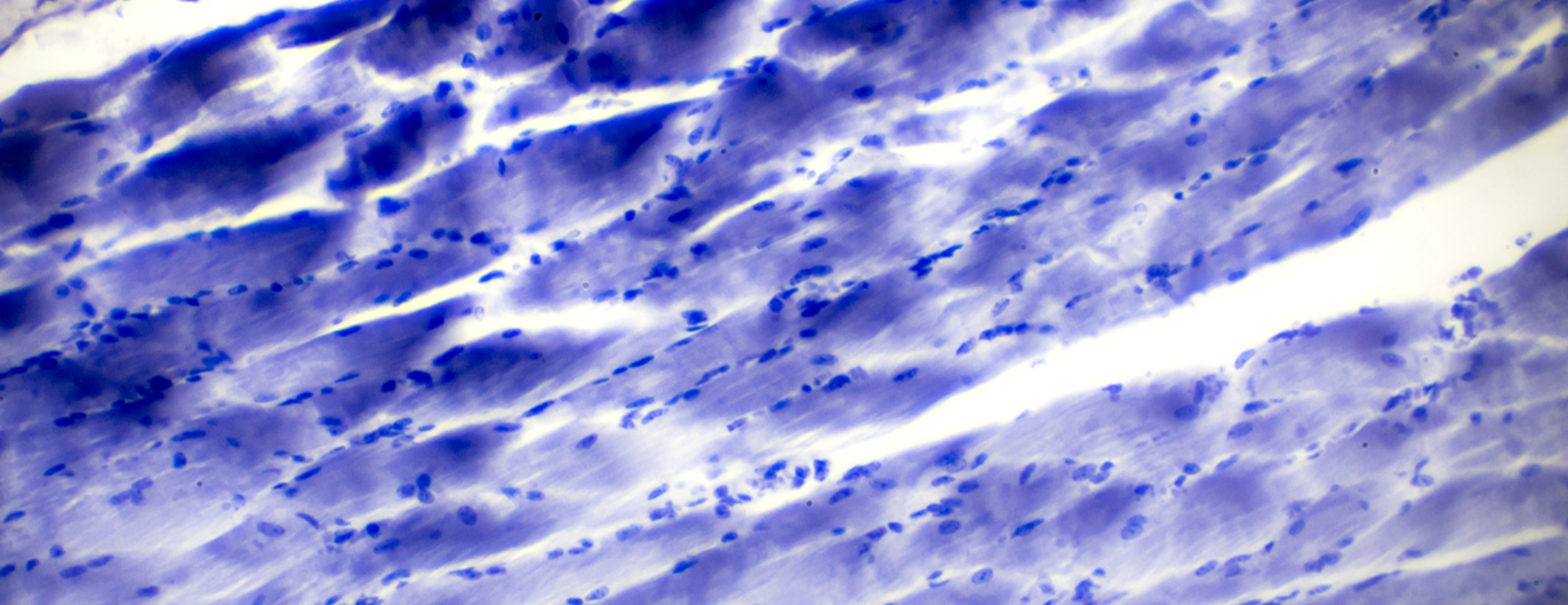
Muscle biopsy
Definition
A muscle biopsy is the removal of a small piece of muscle tissue for examination.
Alternative Names
Biopsy - muscle
How the Test is Performed
This procedure is usually done while you are awake. The health care provider will apply a numbing medicine (local anesthesia) to the biopsy area.
There are two types of muscle biopsy:
- A needle biopsy involves inserting a needle into the muscle. When the needle is removed, a small piece of tissue remains in the needle. More than one needle stick may be needed to get a large enough sample.
- An open biopsy involves making a small cut in the skin and into the muscle. The muscle tissue is then removed.
After either type of biopsy, the tissue is sent to a laboratory for examination.
How to Prepare for the Test
No special preparation is usually needed. If you will have anesthesia, follow instructions on not eating or drinking anything before the test.
How the Test will Feel
During the biopsy, there is usually little or no discomfort. You may feel some pressure or tugging.
The anesthetic may burn or sting when injected (before the area becomes numb). After the anesthetic wears off, the area may be sore for about a week.
Why the Test is Performed
A muscle biopsy is done to find out why you are weak when the doctor suspects you have a muscle problem.
A muscle biopsy may be done to help identify or detect:
- Inflammatory diseases of muscle (such as
polymyositis ordermatomyositis ) - Diseases of the connective tissue and blood vessels (such as polyarteritis nodosa)
- Infections that affect the muscles (such as
trichinosis ortoxoplasmosis ) - Inherited muscle disorders such as
muscular dystrophy or congenital myopathy - Metabolic defects of the muscle
- Effects of medicines, toxins, or
electrolyte disorders
A muscle biopsy may also be done to tell the difference between nerve and muscle disorders.
A muscle that has recently been injured, such as by an
Normal Results
A normal result means the muscle is normal.
What Abnormal Results Mean
A muscle biopsy can help diagnose the following conditions:
- Loss of muscle mass (
atrophy) - Muscle disease that involves inflammation and a skin rash (
dermatomyositis ) - Inherited muscle disorder (
Duchenne muscular dystrophy ) - Inflammation of the muscle
- Various muscular dystrophies
- Destruction of the muscle (
myopathic changes ) - Tissue death of the muscle
(necrosis) - Disorders that involve inflammation of the blood vessels and affect muscles (
necrotizing vasculitis ) - Traumatic muscle damage
- Paralyzed muscles
- Inflammatory disease causing muscle weakness, swelling tenderness, and tissue damage (
polymyositis ) - Nerve problems that affect the muscles
- Muscle tissue under the skin (fascia) becomes swollen, inflamed, and thick (
eosinophilic fasciitis )
There are additional conditions under which the test may be performed.
Risks
The risks of this test are small, but may include:
- Bleeding
Bruising - Damage to the muscle tissue or other tissues in the area (very rare)
- Infection (a slight risk any time the skin is broken)
References
Dubowitz V, Sewry CA, Oldfors A. The procedure of muscle biopsy. In: Dubowitz V, Sewry CA, Oldfors A, eds. Muscle Biopsy: A Practical Approach. 4th ed. Philadelphia, PA: Elsevier Saunders; 2013:chap 1.
Warner WC, Sawyer JR. Neuromuscular diseases. In: Azar FM, Beaty JH, Canale ST, eds. Campbell's Operative Orthopaedics. 13th ed. Philadelphia, PA: Elsevier; 2017:chap 35.
Review Date: 07/10/2018
The information provided herein should not be used during any medical emergency or for the diagnosis or treatment of any medical condition. A licensed physician should be consulted for diagnosis and treatment of any and all medical conditions. Call 911 for all medical emergencies. Links to other sites are provided for information only -- they do not constitute endorsements of those other sites. Copyright ©2019 A.D.A.M., Inc., as modified by University of California San Francisco. Any duplication or distribution of the information contained herein is strictly prohibited.
Information developed by A.D.A.M., Inc. regarding tests and test results may not directly correspond with information provided by UCSF Health. Please discuss with your doctor any questions or concerns you may have.





